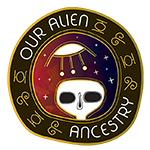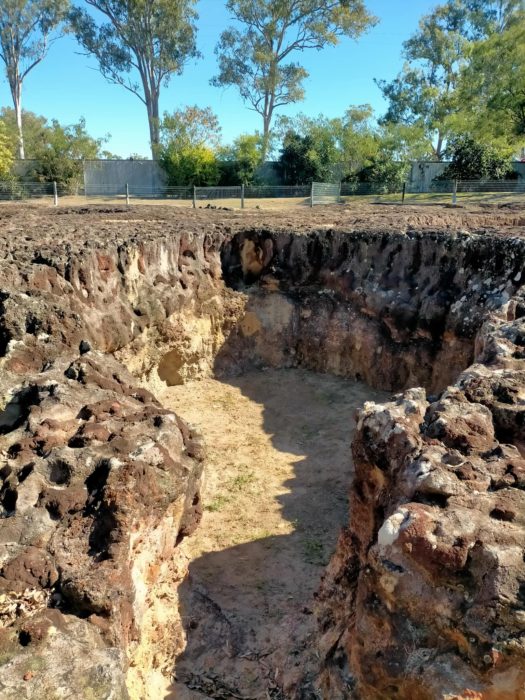
5) Australia’s Stonehenge: Frederic Slater’s Legacy
By Steven & Evan Strong

The re-discovery of a set of sacred mounds, one of which did compose of an imposing array of 188 Standing Stones before it was destroyed through being bulldozed, and the accompanying notes and diagram of the site compiled by one of the most respected academics in the country (upon which the image above was created), should be enough to rewrite huge slabs of Australian and world pre-history. However before doing so, some time must be devoted to determining what to make of the rather enigmatic catalyst who proclaimed to all and sundry that this site was at least the equal of Stonehenge.
This scholar and Egyptologist’s status and eventual enforced anonymity has fluctuated from being one of the main academic spokesmen in the country, to that of an official embargo on any word or paper penned by Frederic Slater. The attack on Slater seems to have begun in earnest in the late 1930’s and continued until his death, of which we have had the greatest difficulty in determining either a date, cause or place of rest. Despite official rumours and omissions to the contrary, we can now prove Frederic Slater was the President of the Australian Archaeological and Education Research Society of Australia and not only lived and died in Australia, and that his work, as radical and sensational as his research was, has been recovered. There is no obituary in any newspaper eulogising his extensive research, nor one official record of his theories or on-site activities. Yet when scanning through copies of newspapers published in the 1930’s, his name appears time after time and always in a favourable light. Could it be his sudden fall from grace in academic circles wasn’t due to a defect in character or error in research, but simply because one site in particular contradicted all the assumptions and theories on Original pre-history and human development which were not only called into question, but shown to be incorrect?
According to Frederic Slater, who was the President of the Australian Archaeological and Education Research Society, an Original stone arrangement he and a colleague were investigating throughout 1939 is “the Stonehenge of Australia.” Assumed to be lost for the last 63 years, this impressive and complex sandstone arrangement is much more than a collection of rocks, signs and symbols positioned on a mound. According to Slater, “the mound is one of the oldest; I should say the oldest, forms of temples in the world, and dates back to the… advent of first man.”
Not only was the mound the first temple, the narrative and wisdom it chronicles is as profound as it is sublime, so much so that Slater claimed it formed “the basis of all knowledge, all science, all history and all forms of writing.”
These are extremely bold claims to make; to suggest that the very first language was spoken and recorded in stone in Australia carries with it many inconvenient historical implications. Modern humanity is assumed to have had its genesis in Africa. We are told a few restless inquisitive souls set foot outside African soil some 60,000 years ago and spread their culture and genes. In this theoretical construct, there is no room for Australia to be anything other than an afterthought and merely an African colony peopled by mariners who surely spoke before setting sail to Australia.
Destroying Australia’s History
Despite the unpopular stance advocated by Slater, his research was meticulous and the methodology sound. More to the point, such was the strength of the case he made on behalf of this arrangement being the First Language, in 1940 representatives of the Australian Government approached the farmer and threatened to confiscate his land because of these rocks. The landholder under threat was openly sympathetic to the archaeology being done, but realised while the stones stood he would lose his land, income and livelihood. Within days of the threat by Government, the stones were reluctantly bulldozed and the land was left alone. Slater had lost his proof and not another supporting public statement was made. The whole unpleasant episode was expunged from the public arena and Slater’s correspondence was apparently lost or destroyed.
And so this historical vacuum remained… until about three months ago when local teacher Richard Patterson was rummaging through some discarded files in the back room of the local Historical Society. Amongst the accumulation of papers and documents were Slater’s letters to his on-field colleague. Soon after, Richard contacted me and my team, and so the unraveling has began.
Rudimentary Language?
The First Sacred Language that Slater claimed to have deciphered is very complex, multi-layered and at his last count of “28,000 words,” far more diverse and complicated than what could be assumed in relation to the very first language spoken on Earth. We are of the belief this complex language spread throughout most of the coastal regions of Australia unified under Southern Law.
While historical and linguistic texts propose that the first tongue was crude and limited to the most basic emotions and objects, which then slowly increased in number and sophistication, here a symbol can have four different meanings.
This formalised method of communication was made up of numbers, hand signs, stone arrangements, elements, trees, letter sounds, animal shapes, etc. The intricate combination of all manner of apparently unrelated themes and disciplines creating a seamless blend into one formal script, is in contradiction to the expected rudimentary linguistic starting point, and calls into question many assumptions relating to human ascension and development.
Leaving aside that reports from the Original Elders of Lore are in accord with the integrity of Slater’s claims, the logistics, technology and labour involved in creating this mound was unparalleled in this country… and deserving of further archaeology on site. By my estimation after viewing from a discreet distance, the hundreds of tonnes of sand, clay and sandstone that make up one mound deposited on top of this flat swampy plain is not part of the local geology.
According to Slater and his co-worker, the closest deposit of sandstone was more than 20 kilometers (12 miles) away. The problem is, until the arrival of British settlers in Australia, no-one in this country had a wheel, pulley, wheelbarrow or metal chisel to cut and move the rocks 20 kilometres, and nor is there any other example in Australia of a mound or stone arrangement weighing over a tonne.
Quite simply, this Original construction doesn’t fit into any academic book or curriculum.

The Mystery of Life
What only unsettles the academic climate further is the content of the narrative contained within this stone arrangement called “The Mystery of Life.” The opening placement of stones on the southern edge, which looks very much like a medicine wheel, was interpreted by Slater to read as “guided by truth, man came to Earth through darkness from light of life that shines far off.” This extra-terrestrial theme of somebody or being coming to this planet from “far off” is repeated throughout these constructions, extolling that the “truth was brought out on wings to Earth” and “the Divine Light from afar to the Earth brings the soul to man.”
It is a site without parallel on the east coast of Australia at so many levels. The means of construction, significance, content, sacredness and real possibility that this arrangement chronicles the first time modern humans devised a formal means of expressing words and thoughts, are but some of issues that need to be investigated.
In what only adds to the intrigue, Slater is not only adamant that the ancient Egyptians were not only present (and most probably assisting in the transport of sandstone and fill) but they came in homage and reverence. He asserted that “there is no mistaking the fact that the Aborigines… gave not only to the Egyptians their knowledge and their foundation of hieroglyphics and their philosophy, but formulated the basis of all knowledge in the beginning, now and to come.”

Initial Observations
The archaeology conducted on site is still in the process of being compiled and analysed, however a few simple observations can be already offered. The chances are extremely high that this stone arrangement is an actual account of the First Sacred Language and conveys both historical details and a prophecy of times soon to come. The first mound is definitely artificial, its shape is too symmetrical, the placement on a flat swampy plain is dramatically at odds with the surrounding topography, and the sand, clay and sandstone that makes up this construction is in contradiction with its immediate geology. Throw into this mix confirmation from Original Elders and Custodians versed in Original Lore and history that this is one of, if not the, most sacred site in Australia, and we begin to see why Slater was so adamant that this is “Australia’s Stonehenge.”
Frederic Slater was an Egyptologist. He was the President of the Australian Archaeological Research and Education Society. Australian Government officials approached the landholder in 1940 and threatened to confiscate their freehold land simply because of these standing stones. These are facts. Slater’s opinions and our research of them is obviously up for debate and alternative explanations. But with the bounty of archaeology found on site and Elders confirming Slater’s translation, this stone arrangement is potentially the most sacred archaeological site in Australia.
There is no other explanation on offer.
References: All Quotes from Frederic Slater’s Personal Notes.





Greetings, one might find searching through ‘Trove’ articles an interesting prospect. Search under various headings, such as Australia’s Stonehenge, Frederic Slater, Standing Stones etc.
Hi Evan and Steve,
I’ve been travelling the world with my wife for the last 5 years looking for ancient sites. We have been to the Bosnian pyramids and tunnels and met Dr Sam Osmanagich, Angkor Wat – Ko Keh Pyramid, Asuka Japan, Yakushima japan (megalith stone) and are booked for Peru next year. We are very passionate about seeking our true history, and we have maybe found some interesting stone formations at Girraween national park. I live very close to the Nothern Nsw area and wondered if I could maybe help or do some research at the site or even just a visit? I understand there maybe some sensitive, cultural issues but I assure you our intentions are pure. Please email me at cstewart.gcu@gmail.com.
P.S. Re Frederic Slater’s death, . . . . there was a funeral notice in the SMH on 17th March, 1947.
Source: wikipedia: https://en.wikipedia.org/wiki/Frederic_Slater
Bob K
wow for the tip Bob. was surprised to see it there in wikipedia Cheers Evan & Steve
I so admire the enthusiasm and dedication Steve, and his few helpers, put into his, and this, most fascinating work concerning our ancient origins, and about our original natives in Australia.
And like Graham Hancock’s work (and many others), this stuff should start being taught in our schools, from kindergarten level, right up to the highest levels in education!
Just be reassured guys, by this little known fact, relating to the four predicable stages of any new ‘scientific’ discoveries and/or ideas, . . . . . . .
• Stage 1, sceptics confidently proclaim that the idea is impossible because it violates the Laws of Science. This stage can last from years to centuries, depending on how much the idea challenges conventional wisdom.
• Stage 2, sceptics reluctantly concede that the idea is possible, but it is not very interesting and the claimed effects are extremely weak.
• Stage 3 begins when the mainstream realizes that the idea is not only important, but its effects are much stronger and more pervasive than previously imagined.
• Stage 4 is achieved when the same critics who used to disavow any interest in the idea begin to proclaim that they thought of it first.
Eventually, no one remembers that the idea was once considered a dangerous heresy.
Bob Kenter
you summarize it very well Bob rather impressed